The landscape photographer surveying the ‘liminal spaces’ of war — and peace
An-My Lê doesn’t identify as a war photographer. Though her body of work across the last three decades deals largely with themes of human conflict, it’s not the act of combat itself she is most preoccupied with. For Lê, who came to the United States from Vietnam as a teenage refugee in 1975, and is now based in New York, it’s rather the ambiguous “liminal spaces” of military existence that hold her focus, offering a psychological vantage point beyond the machinery — and mythology — of war.
Take Lê’s “29 Palms (2003-4),” a black-and-white series shot at a Mojave Desert camp where a battalion of US Marines were conducting training ahead of deployment to Iraq and Afghanistan. Through Lê’s lens, the arid California landscape evokes the nationalism of both American expansionism as well as Hollywood’s reenactments of wars abroad. Her images capture the rising smoke of artillery fire and bolts of lights descending from air bombs during war games, barracks scrawled in faux Arabic to mimic scenes in the field, and young soldiers role-playing — some American heroes, others enemy insurgents.
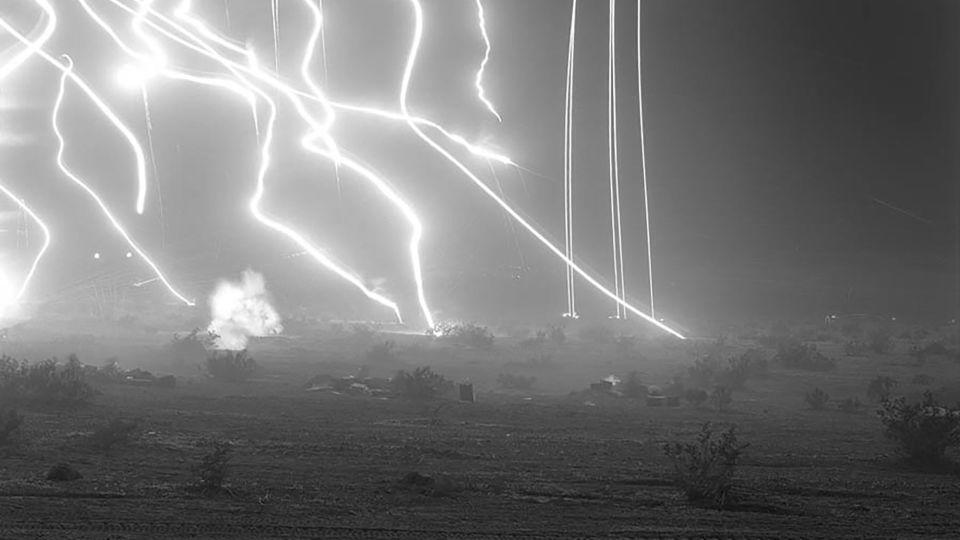
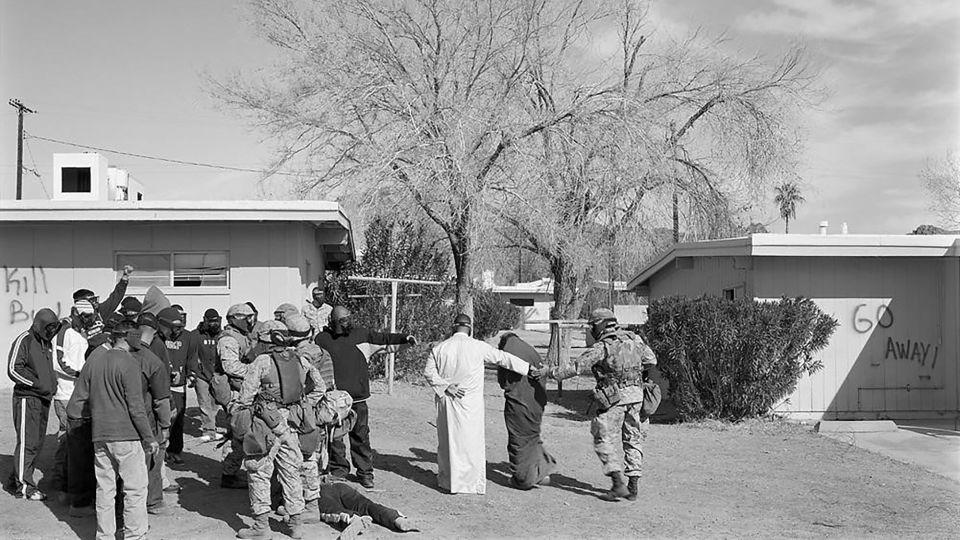
“It doesn’t have the same explosive, devastating quality of real combat,” Lê said of the series. “It’s much quieter. It provides a space that is a little more meditative… You can think about the reasons we are going to war — and about the consequences.”
Some 20 years since the completion of “29 Palms,” Lê is currently exhibiting her first-ever New York museum survey, “Between Two Rivers,” at the Museum of Modern Art. The show comprises other earlier works like Lê’s study of a Hudson River quarry, “Trap Rock (2006-7),” along with her ongoing series “Silent General” and a new cyclorama — a series of connected panels arranged into a 360-degree view — titled “Fourteen Views (2023),” which was created for the exhibit.
Drawing parallels between the Mekong and Mississippi, “Between Two Rivers” presents Lê’s photography in the context of the world’s water ways — what Lê describes as “fluvial journeys” that represent the ceaseless, circular flow of human history.
“It’s the notion of multiple rivers, multiple sources of culture and information, things changing, things never staying still… It’s about borders and delineation,” Lê explained in an interview with CNN, adding that, to her, rivers also take on a personal meaning. “The river is the foundational source of many of Vietnam’s myths and origin stories, and so it just seemed really fitting to me.”
Testing the waters
Extending this sweeping conceit to oceans, Lê’s series “Events Ashore (2005-14)” is a nuanced look at the daily lives of non-combat personnel aboard maritime vessels across seven continents — from scientific research missions in the Arctic to humanitarian and peacekeeping exercises in Asia and Africa.
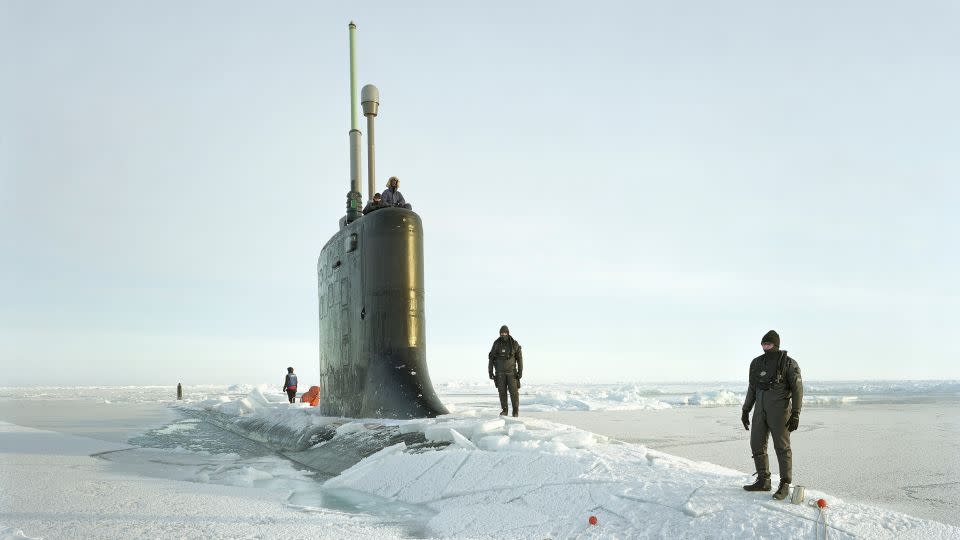
“Events Ashore” is a narrative told both close-up, through portraits of non-military personnel — predominantly women, whom Lê says interest her more in male-dominated spaces — as well as in zoomed out scenes of marine vessels.
“Growing up, the idea of exploration, the idea of conquering or being conquered somehow always involved the ocean and ships at sea,” she told CNN.
Embedding herself onboard battleships, aircraft carriers and submarines, among others, Lê’s work showcases the vast network of power structures seemingly needed to maintain the veneer of control in peacetime. (She was required to obtain clearance from the supervisor of each mission, take safety courses, and be chaperoned by an official escort while shooting.)
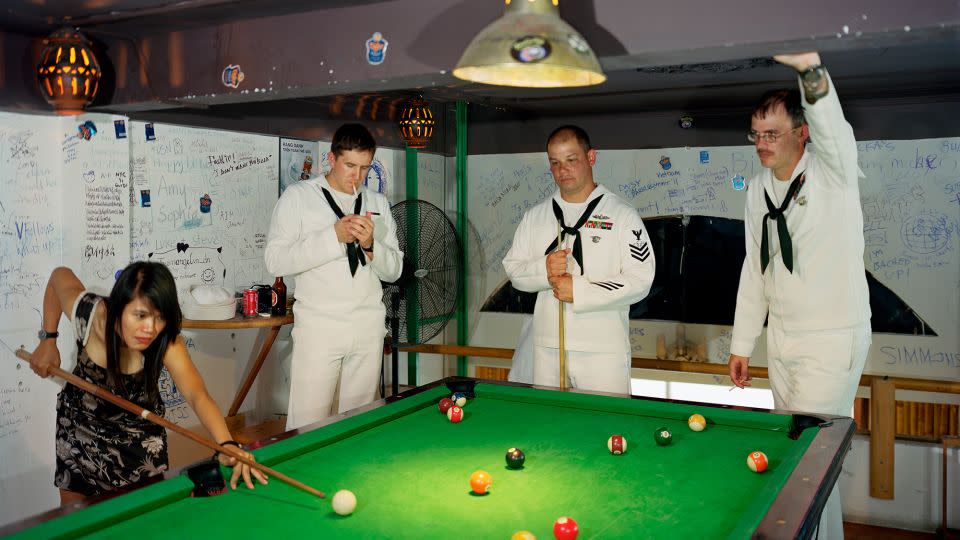
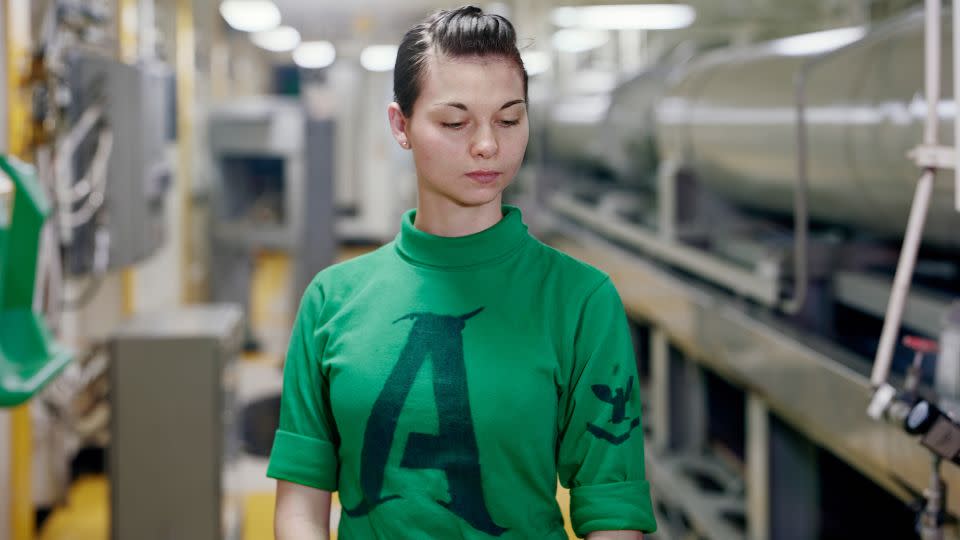
Lê’s gaze lingers often on interpersonal dynamics of collaboration and colonization; from three off-duty sailors looming over a single Vietnamese woman playing pool to a sea of camouflage-clad marines facing a lone Ghanaian man during a meeting about flood emergencies.
There are also the intrapersonal dynamics: in conversations with her American subjects, Lê said she often inquired about their reasons for joining the military.
“I didn’t know, for example, that a lot of Americans join the military for economic reasons… a way for them to get out of where they came from. Or it’s a family thing,” Lê said. “But if the President decides we’re going to war, that’s it. They have given up their right to decide. I sometimes felt a lot of empathy for the individual soldiers. And that’s a complicated emotion, being fully cognizant of the devastation that was inflicted on Vietnam and its people.”
“I was interested in exploring the US military-industrial complex in all of its contradictions — so much will to do good but also many blunders,” Lê continued. “I was willing to try to explore the subject in all its nuances and complexities.”
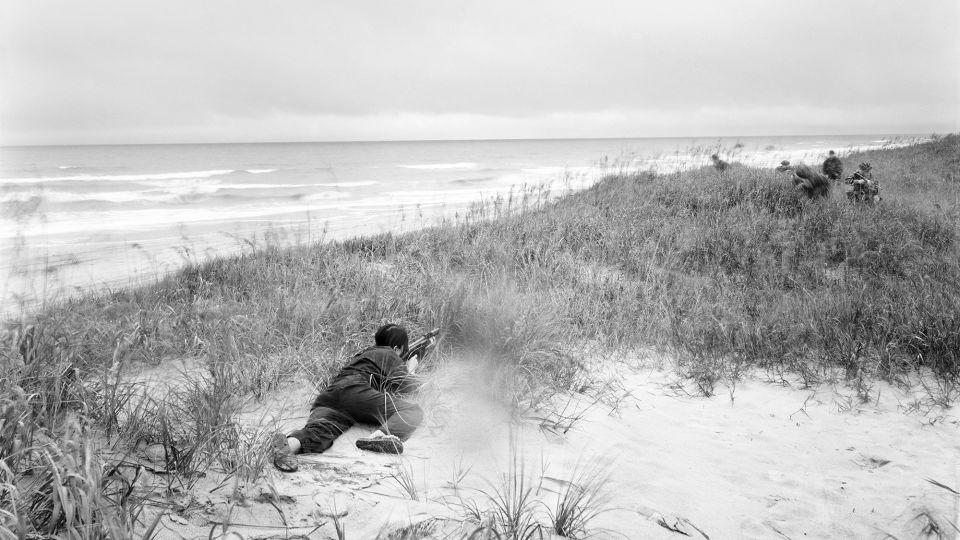
Lê’s work doesn’t impose any particular morality on the viewer; instead, she intentionally utilizes distance and scale to convey a complexity often overlooked. Referencing a film she created to accompany “29 Palms,” she noted that her practice is often interpreted differently by viewers across the political spectrum.
“In the film, the young Marines look like protagonists — handsome, young, and full of future potential,” she said. “Some liberal people say this is an incredible anti-war statement, because it shows how vulnerable they are… how we’re throwing away the future by sending them to war. Conservatives see the same film and think, ‘Oh, these guys are just heroic. This is the face of the military that we need to show overseas to make a point about democracy.’”
Navigating conflict
In many respects, Lê might be better described as a landscape photographer: The toll of war and the cost of military intervention are subtexts within her images, but the true subject is often the environment itself. Citing the seascapes of 19th-century photographer Gustave Le Gray as inspiration, Lê explained that her primary aim is not making conventionally beautiful images — though her photos often are — but rather to capture the sublime, and by extension the ambiguous.
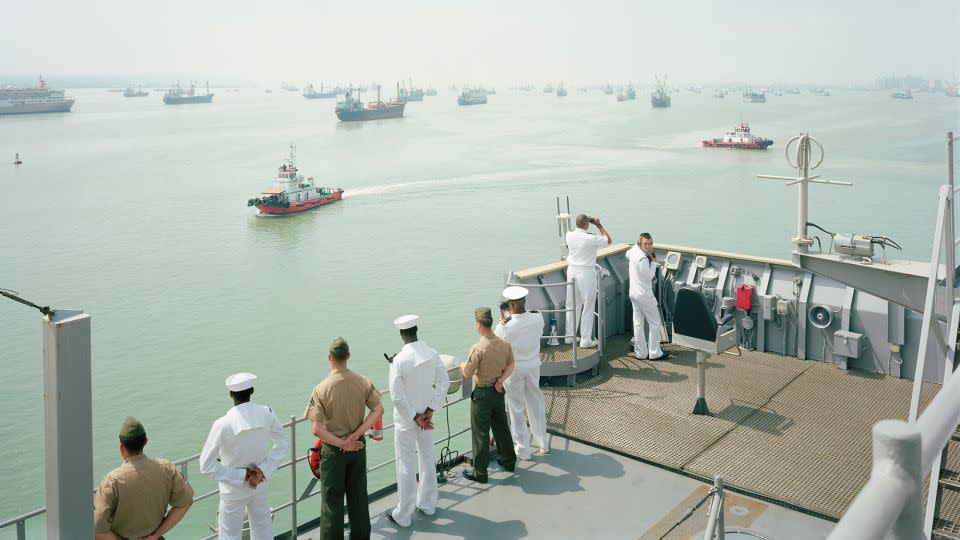
This tension is perhaps most apparent in “Manning the Rail, USS Tortuga, Java Sea (2010),” which portrays sailors and soldiers on a Navy landing ship surveying an array of smaller vessels and the horizon beyond. It’s both majestic and foreboding, as if the people in the photo are bracing for the threat of danger ahead.
“You really start thinking about the sublime when you’re at sea, coming into contact with the weather and the air and the forces of nature,” Lê said of the image. “(It’s) something that’s ineffable as experienced from the perspective of American military power. It felt like a mirage, actually. And I am always interested in the disparity of power and what that means.”
The breadth of Lê’s body of work is showcased holistically in the aforementioned cyclorama “Fourteen Views.” For this piece, Lê took inspiration from 19th-century European panoramas, which she said were typically painted “as a propaganda tool,” to showcase foreign conquests and justify imperialism in the pre-cinema era. But rather than show one cohesive image, Lê used the horizon lines of different rivers and waterways across the world in order to portray a shared experience across space and time — from a bridge over the Mekong River to the banks of Bayou St. John in New Orleans.
“It’s a kind of fluvial journey that starts somewhere and ends somewhere else,” she explained. “But you basically end up where you start. It’s a web of connectivity between different times and different cultures.”
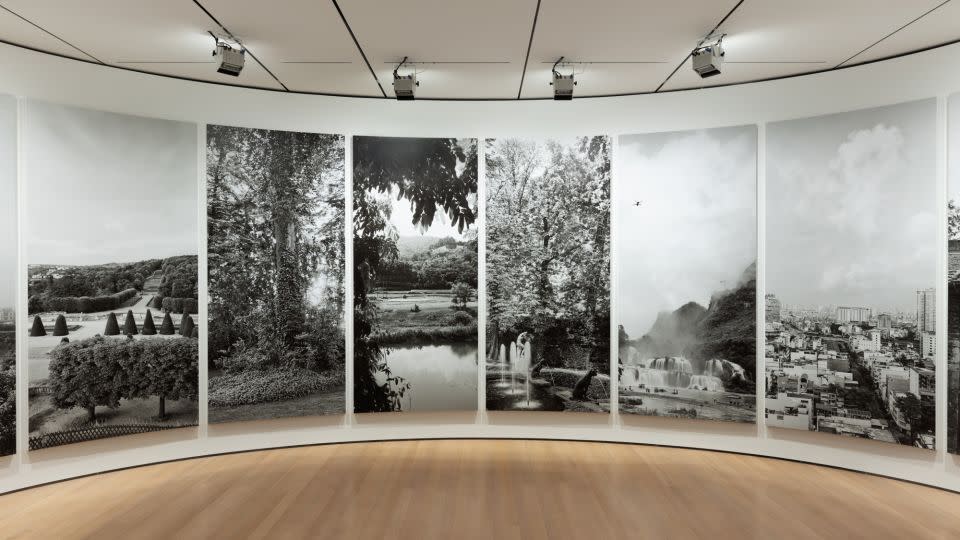
While the universality of this theme is largely apparent across her practice, Lê is perhaps most incisive when she applies her own personal history — the way her own life has been marked by French colonialism and American imperialism — to her inquiries about war, myth and empire.
“There’s a sense of confusion because the images come from what seem like disparate locations — I think it’s the way a lot of dislocated refugees and immigrants feel. We are torn in different directions. We have different allegiances and histories,” she concluded. “(But) I think it also points toward a future that is getting more and more global — and hopefully more equitable.”
For more CNN news and newsletters create an account at CNN.com

